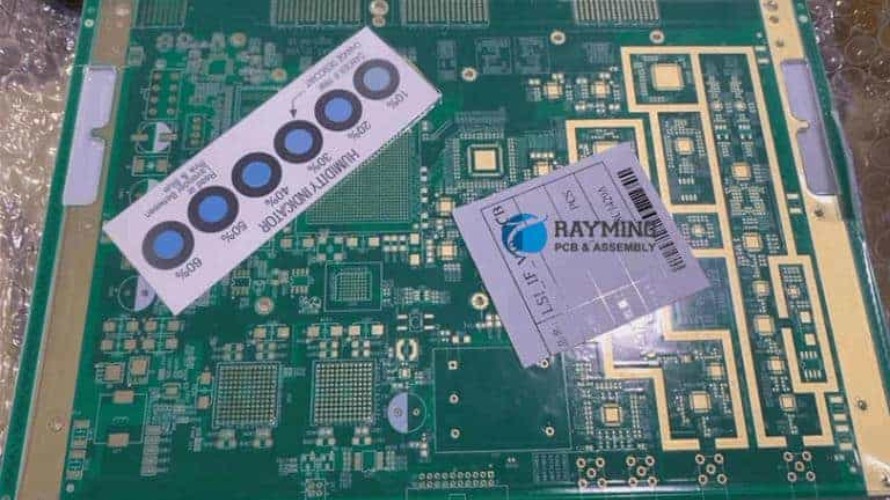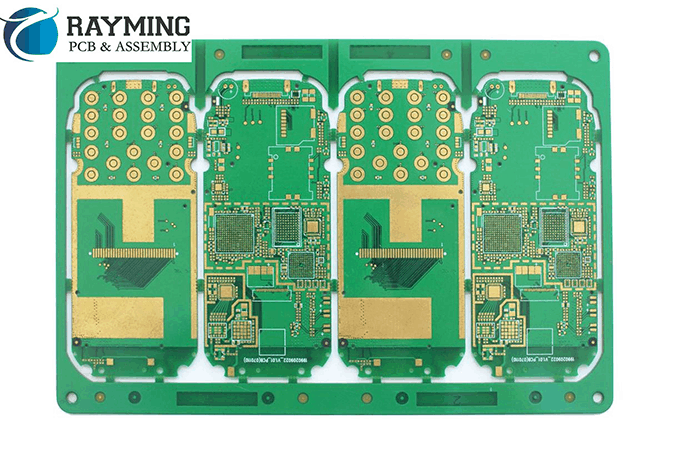Vias are conductive holes used in printed circuit boards (PCBs) to connect different layers of the board together. There are two main types of vias – blind vias and through-hole vias. The key differences between blind and through-hole vias are:
Blind Vias
Blind vias connect one or more internal PCB layers without going all the way through the entire board. Some key characteristics of blind vias:
Connect Internal Layers Only
- Blind vias only connect internal layers of a PCB and do not extend to the top or bottom outer layers. For example, a 4-layer board may use blind vias to connect layers 2 and 3 without connecting to layers 1 or 4.
Stop at Internal Layer Boundary
- Blind vias stop at the boundary of the internal layer they are connecting and do not penetrate the entire board. The via will have depth equal to the thickness of the layers it is connecting.
Require Plated Through Holes
- Since blind vias have a dead-end, the hole needs to be plated for conductivity. A chemical plating process coats the interior hole walls with a thin layer of copper.
Allow Higher Density Routing
- With blind vias, traces can route over the top and bottom layers without potential interference from a through via. This allows higher density trace routing.
Facilitate Impedance Control
- Since blind vias do not penetrate the entire board, their limited depth aids in maintaining consistent impedance in high-speed designs. The shorter stub helps control resonant effects.
Used on High Layer Count Boards
- Blind vias help optimize routing on boards with 4 or more layers by connecting only the necessary internal layers. As layer counts increase, blind vias become more common.
Through-Hole Vias
Through-hole vias extend the entire distance between the top and bottom board layers, penetrating the entire board. Key traits of through-hole vias include:
Connect Top to Bottom Layers
- The main purpose of a through via is to provide vertical interconnects between the top and bottom layers of a PCB. The via hole extends through all layers from top to bottom.
Span Entire Board Thickness
- A through via hole will have a depth equal to the total thickness of the entire board, passing through all layers from top to bottom.
Can Use Non-Plated Holes
- Since through vias span between surfaces, the hole does not require plating for conductivity. The hole can be left unplated if the walls are conductive, such as with a drilled hole.
Require Drill Breakout on Outer Layers
- On the top and bottom outer layers, the through hole will need a breakout pad or annular ring for routing traces and forming solder connections.
Prone to Stub Resonance Effects
- The long vertical stub of a through via can cause impedance discontinuities, reflections, and resonant effects, especially at higher frequencies. This can interfere with signals.
Less Routing Density on Outer Layers
- Since through vias consume space on the top and bottom layers, they allow less density for trace routing compared to blind vias.
Low Cost and Simple Process
- Through vias are relatively inexpensive and simple to implement using standard drilling techniques. This makes them a good choice for less complex, low-density PCB designs.
Common on Double-Sided and Multilayer Boards
- Through vias are very commonly used on double-sided boards and moderate complexity multilayer boards where high density routing is not required.
Key Differences Summary

| Blind Vias | Through-Hole Vias |
|---|---|
| Connect internal layers only | Connect top to bottom layers |
| Stop at internal layer boundary | Span entire board thickness |
| Require plated holes | Can use non-plated holes |
| Allow higher density routing | Require drill breakout on outer layers |
| Facilitate impedance control | Prone to stub resonance effects |
| Used on high layer count boards | Less routing density on outer layers |
| More complex process | Low cost and simple process |
When to Use Each Type
The choice between using blind or through-hole vias depends on the PCB layout and design requirements:
- Use blind vias when:
- Connecting internal layers on high layer count boards
- High density routing is needed
- Controlling impedances for high-speed designs
- Use through-hole vias when:
- Connecting top to bottom layers
- Low density designs
- Low layer count boards
- Cost needs to be minimized
- On complex boards, often both via types are used together:
- Through vias for basic vertical interconnects
- Blind vias for specialized internal connections
Manufacturing and Cost Considerations
The manufacturing process required for blind and through-hole vias affects their relative costs:
- Blind vias require:
- More complex lamination process
- Precise depth control
- Plated through holes
- Result in higher cost
- Through-hole vias:
- Created by basic mechanical drilling
- Lower cost process
- Non-plated holes can sometimes be used
- Generally lower cost than blind vias
However, the higher density routing enabled by blind vias allows reducing the overall board layer count. Since each layer adds significant cost, blind vias can lower cost in high layer count designs.
The cross-section diagram below illustrates the difference in depth between a blind and through-hole via connecting four PCB layers:
Applications and Examples
Some examples of how blind and through-hole vias are used on real PCBs:
IC and Component Soldering
- Through-hole vias commonly used to connect surface mount IC pins and pads to inner layer traces
- Allows flexibility in routing signals from top side components anywhere on the board
High Speed Channel Routing
- Blind vias used when routing high speed signals like DDR or PCIe between internal layers
- Minimizes stub length and prevents resonance for best signal integrity
Power Distribution
- Through-hole vias effective for distributing power from surface planes throughout all layers
- Allows connecting components anywhere on layers to the power planes
RF Circuits
- Buried vias help isolate sensitive RF circuits on inner layers
- Prevents interference by avoiding stubs to top and bottom layers
Mixed Signal Boards
- Blind/buried vias route fast digital signals inside while slow analog signals route on outer layers
- Avoids digital noise coupling into sensitive analog signals
Heavy Copper Inner Layers
- Blind vias allow small breakout pads on outer layers connecting to thick copper inner layers
- Keeps most of the heavy copper uninterrupted for high current power distribution
Pros and Cons Comparison

Blind Vias
Pros:
- Allows high routing density
- Controls impedances for high frequencies
- No stubs to resonant with signals
- Can isolate circuits between layers
Cons:
- More complex manufacturing process
- Requires plating process
- Generally higher cost than through vias
Through-Hole Vias
Pros:
- Simple manufacturing using standard drilling
- No plating required in some cases
- Allows connections from top to bottom layers
- Low cost process
Cons:
- Limits routing density on outer layers
- Can cause unwanted resonance effects
- Not suitable for high speed routing
Frequently Asked Questions
What is the key difference between a blind via and a through-hole via?
The key difference is that blind vias connect only between internal layers, while through-hole vias span the entire board vertically connecting the top and bottom layers.
When should blind vias be used vs through-hole vias?
Use blind vias when high density routing, impedance control, and isolation between layers is needed. Use through-hole vias for basic vertical interconnects, lower complexity boards, and when cost needs to be minimized.
Do blind vias require plated through holes?
Yes, since blind vias have a dead-end hole, the hole walls need to be plated to provide electrical conductivity between layers. Through-hole vias can sometimes use non-plated drilling.
Can blind and through-hole vias be used together on the same PCB?
Yes, often complex boards will use both blind vias for specialized internal connections and through vias for general vertical interconnects. The two can coexist on the same design.
Which type of via is more expensive to manufacture?
Blind vias require more complex laminating and plating processes, so they are generally more expensive to manufacture than drilling through-hole vias. However, blind vias can reduce overall cost by enabling higher density routing that lowers layer counts.






Leave a Reply